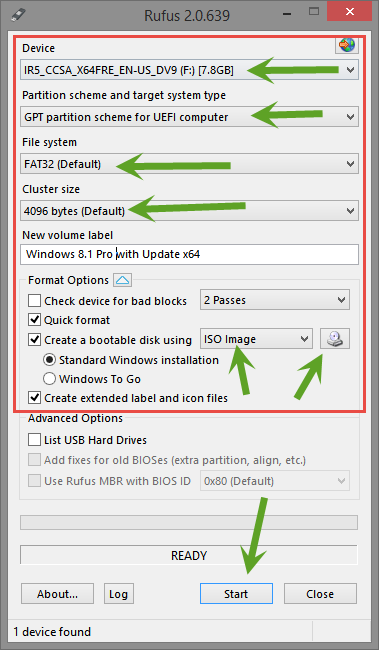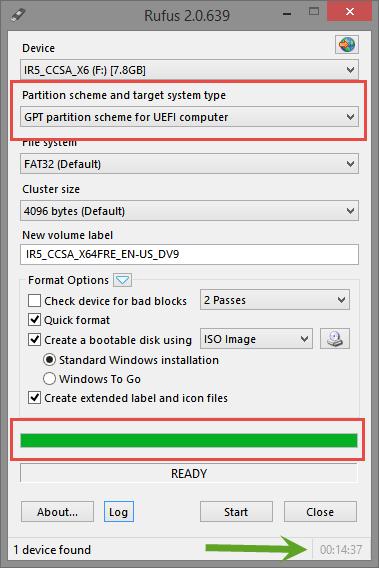Does anyone here run there system using UEFI instead of BIOS mode? I have a choice on my new Laptop but that would mean doing a clean reinstall of the OS Win 8.1 Pro in UEFI mode. I have read many articles but would like to hear from the Community Members!
http://www.pcpro.co.uk/features/381565/uefi-bios-explained
https://answers.microsoft.com/en-us/windows/forum/windows_7-security/uefi-secure-boot-in-windows-81/65d74e19-9572-4a91-85aa-57fa783f0759
https://technet.microsoft.com/en-au/library/dn747883.aspx
https://technet.microsoft.com/en-au/library/hh824987.aspx
https://technet.microsoft.com/en-us/library/hh824898.aspx
Thanks,
Daniel 😃
Hi Daniel,
I'm still reading this article on the differences. I rebooted my W/7 Pro/ Dual boot W/8.1 and checked the Bios and the UEFI was disabled so I enabled it .(Edited)
Didn't know there was another option in the Bios! Just a green apple here!:D:p
I'm still reading this article on the differences. I rebooted my W/7 Pro/ Dual boot W/8.1 and checked the Bios and the UEFI was disabled so I enabled it .(Edited)
Didn't know there was another option in the Bios! Just a green apple here!:D:p
Well I have Win 8.1 Pro x64 installed in UEFI mode I find it much faster boot up than BIOS about 10 seconds to desktop I did have Secure Boot on but didn't see any difference or the need at this time. Also @ I had to make a Bootable USB Flash Drive with Win 8.1 Pro x64 ISO and had to do it for UEFI mode for it to work properly with rufus.
Daniel ;)
Daniel ;)
Thanks Daniel for all that information! Great to know that! ;)
@TripleHelix
I didn't notice a faster start up time though..
@TripleHelix
I didn't notice a faster start up time though..
You have to what I did above and set your BIOS to UEFI instead of Legacy and install in that mode so just going to UEFI from BIOS mode most times it will not boot up like now I can't go to BIOS mode as it will not boot up as I don't have an MBR now so I can't get any Bootkits now, not that I ever would! LOL I'm still learning myself and Windows 8 & 8.1 fully supports UEFI unlike other OS's which can be done but that's another story. UEFI was designed for Intel's full 64 bit Intel Itanium processor's many years ago.@ wrote:
Thanks Daniel for all that information! Great to know that! ;)
@
I didn't notice a faster start up time though..
CompatibilityProcessor compatibilityAs of version 2.4, processor bindings exist for Itanium, x86, x86-64, ARM (AArch32) and ARM64 (AArch64).[14] Only little-endian processors can be supported.A normal PC BIOS is limited to a 16-bit processor mode and 1 MB of addressable space due to the design being based on the IBM 5150, which used the 16-bit Intel 8088. In comparison, the processor mode in a UEFI environment can be either 32-bit (x86-32, AArch32) or 64-bit (x86-64, Itanium, and AArch64).64-bit UEFI firmware implementations understand long mode, which allows applications in the pre-boot execution environment to have direct access to all of the memory using 64-bit addressing.UEFI requires the firmware and operating system loader (or kernel) to be size-matched; for example, a 64-bit UEFI firmware implementation can only load a 64-bit UEFI operating system boot loader or kernel. After the system transitions from "Boot Services" to "Runtime Services", the operating system kernel takes over. At this point, the kernel can change processor modes if it desires, but this bars usage of the runtime services (unless the kernel switches back again).[19]:sections 2.3.2 and 2.3.4 As of version 3.15, Linux kernel supports booting of 64-bit kernels on 32-bit UEFI firmware implementations running on x86-64 CPUs, with UEFI handover support from a UEFI boot loader as the requirement.[20] UEFI handover protocol deduplicates the UEFI initialization code between the kernel and UEFI boot loaders, leaving the initialization to be performed only by the Linux kernel's UEFI boot stub. http://en.wikipedia.org/wiki/Unified_Extensible_Firmware_Interface
Daniel 😉
Reply
Login to the community
No account yet? Create an account
Enter your username or e-mail address. We'll send you an e-mail with instructions to reset your password.







